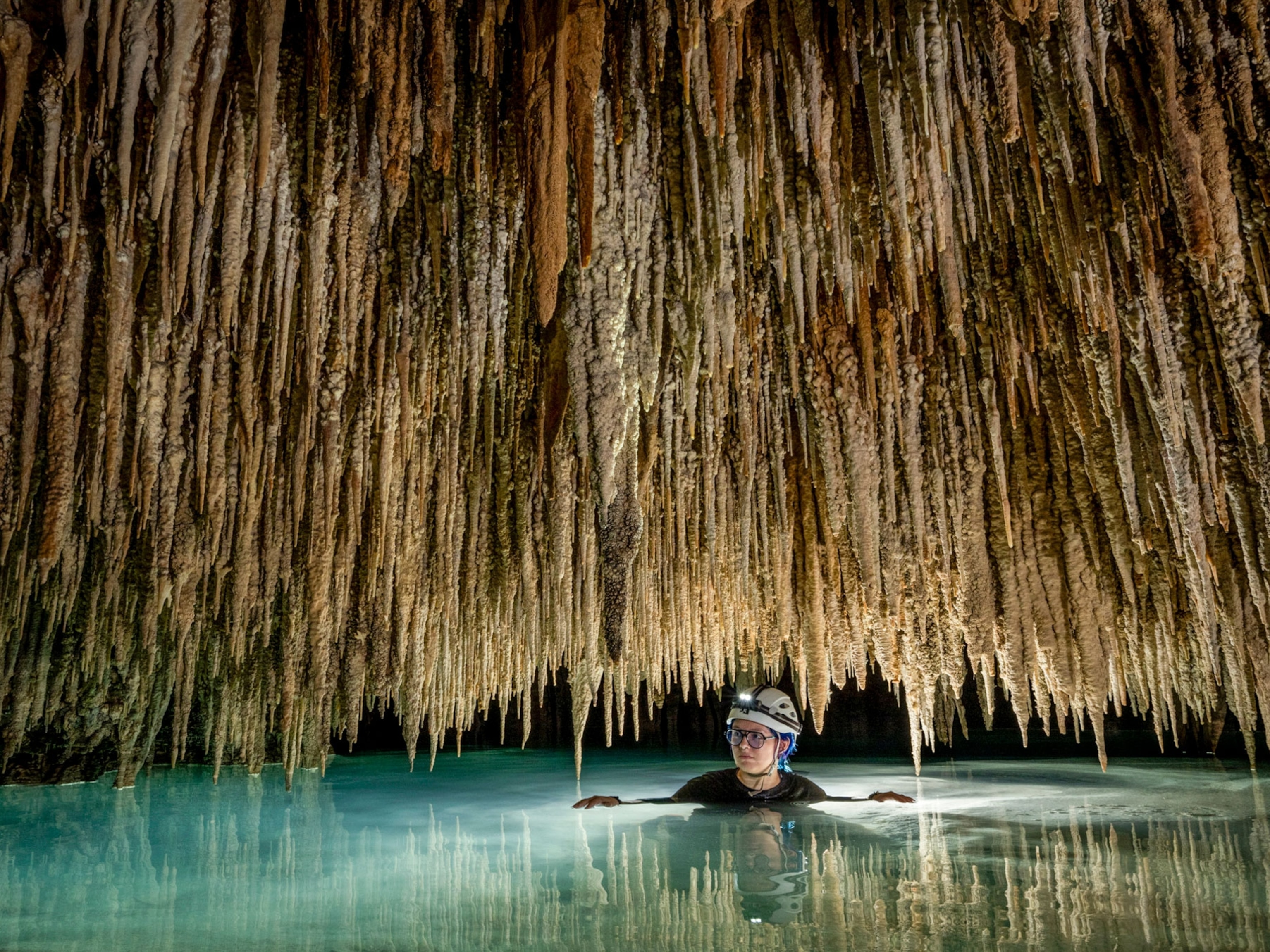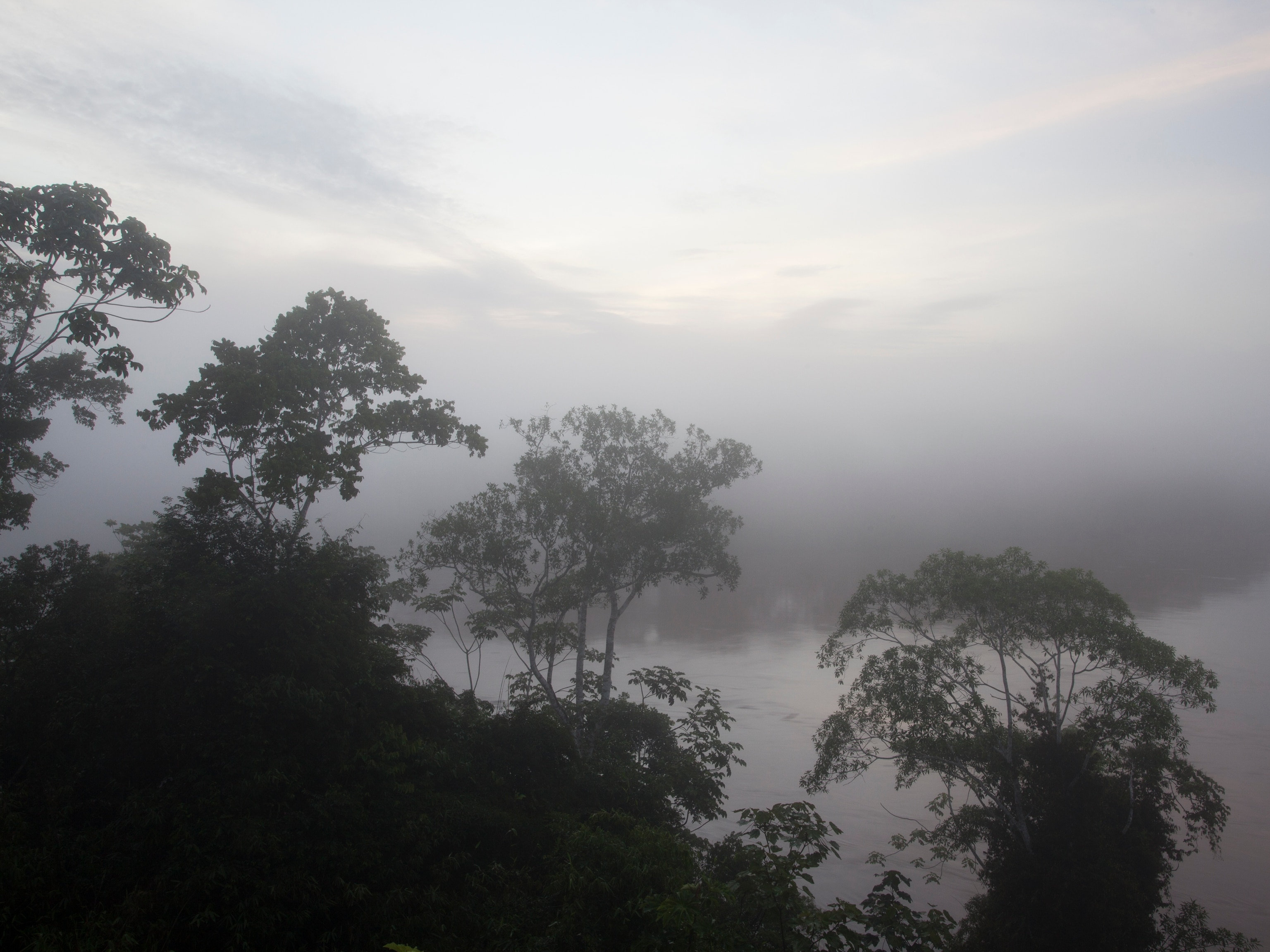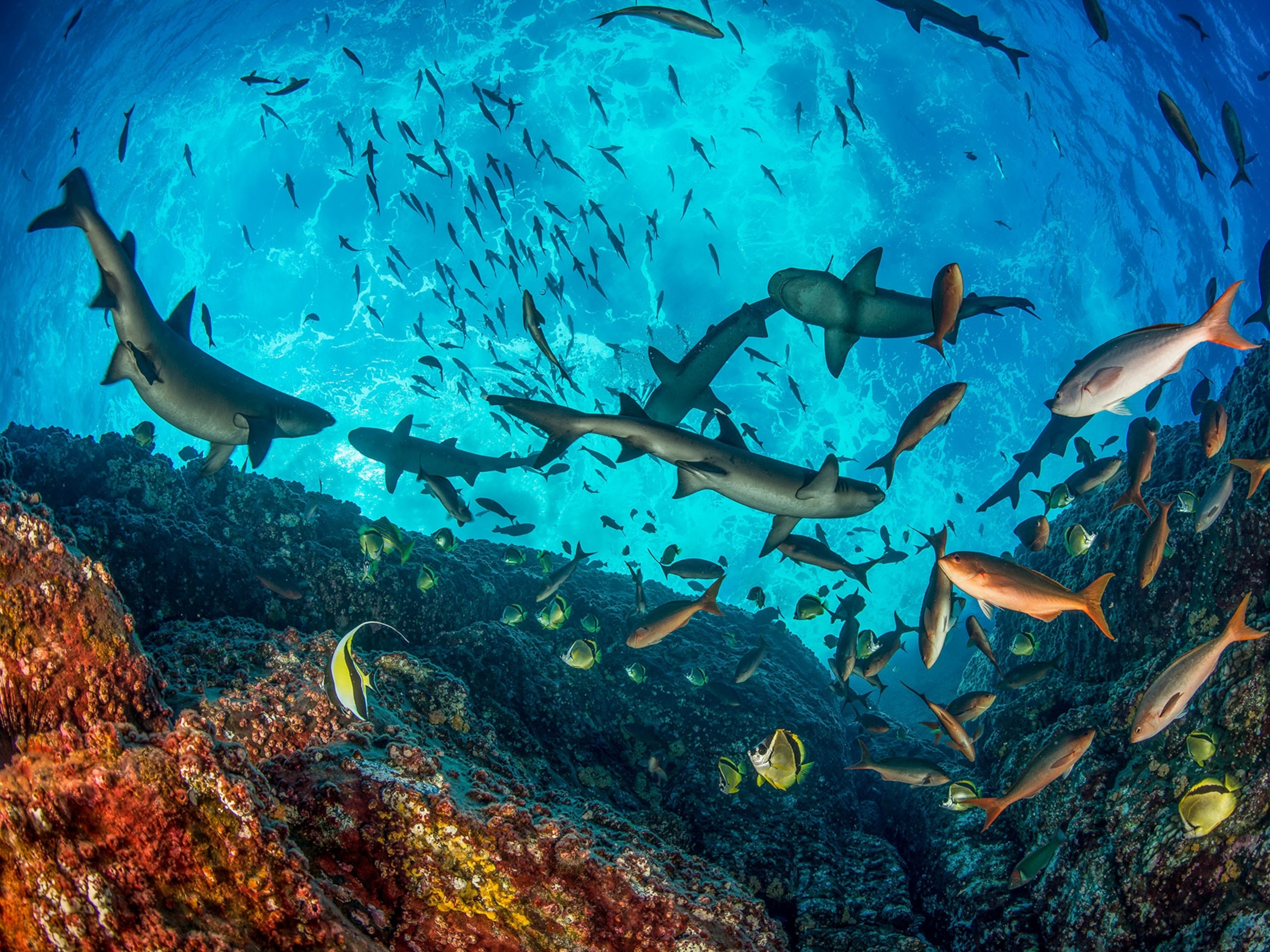Building tomorrow in the Sundarbans
How an inspiring project is rebuilding the lives of an endangered community facing the threat of rising sea levels.
With a driving vision of building tomorrow, a collection of excavators are helping to protect the Sundarbans, a historic region between India and Bangladesh, from the threat of flooding. In Bengali, ‘Sundarbans’ means 'beautiful forest' – an appropriate name for the largest delta and mangrove forest on Earth.
Situated along the Bay of Bengal, the treasured Sundarbans delta is a unique part of the world. Untold numbers of human, animal and marine life all draw life from these fertile lands, including the Bengal Tiger. It is such a diverse and harmonious ecosystem that it has been proclaimed a UNESCO World Heritage Site. But even this can’t protect inhabitants from growing natural threats.
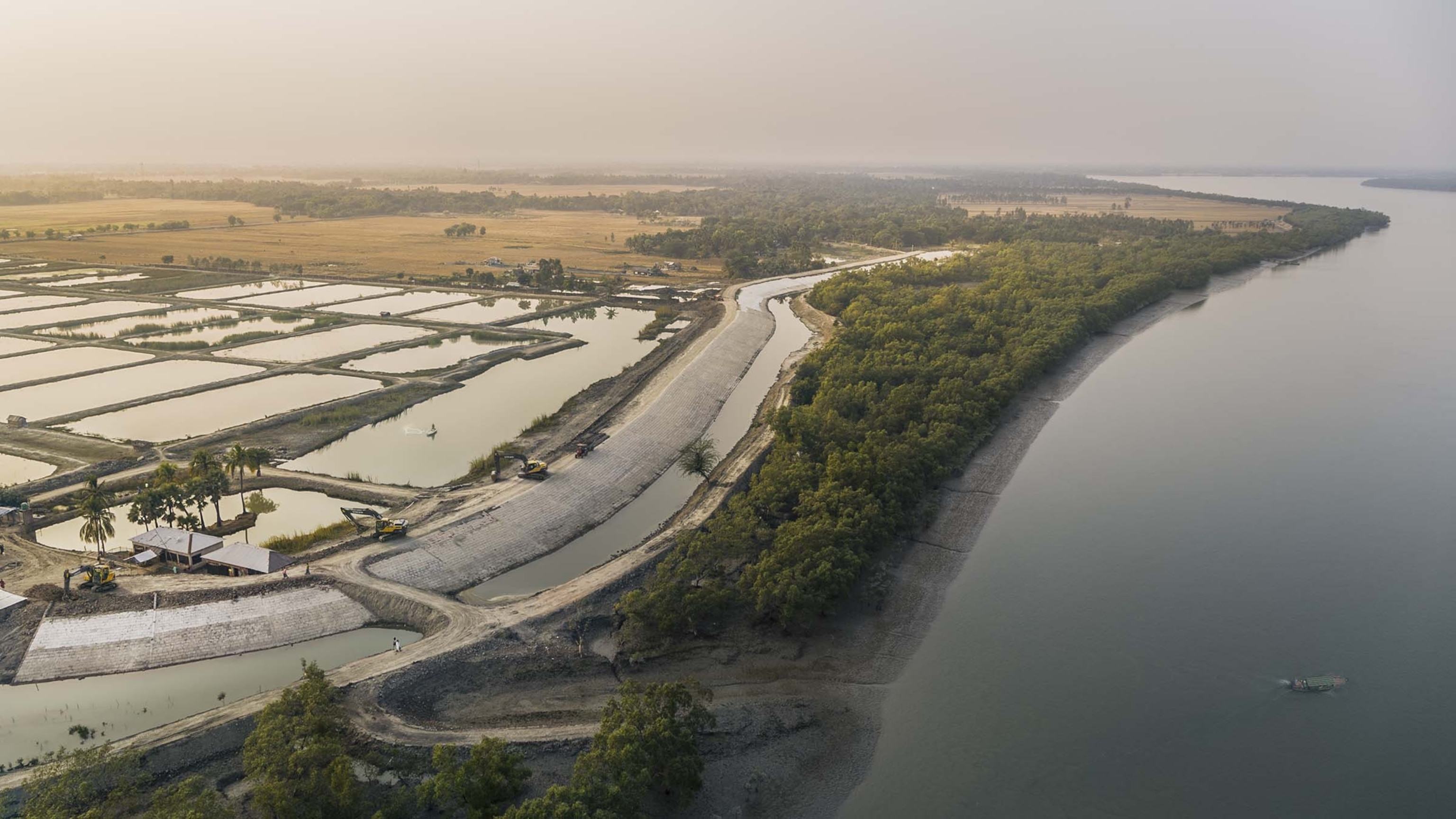
This archipelago of islands is affected by one of the most dramatic examples of rising sea levels in recent history; increasing by anywhere between three and eight mm per year. It’s up to twice the rise of the global average. Some islands have been losing 200 meters of their coastline a year, killing off 90 kilometers of mangrove forest from land erosion within the last few years. One of the primary contributors to this was the 2009 cyclone Aila, which swept away the mud embankments that naturally protected the area, exposing local fishing and farming communities to repeated flooding and tides so dramatic they swallow up almost one third of the land each day.
Covering 3,500 kilometers of coastline, the previous embankments were created in the 18th century, when the British empire cropped the mangroves back to make space for agriculture. Unfortunately, the heavy rains and 140km/h winds Aila brought finally proved too much, tearing down the embankments and destroying hundreds of thousands of homes. When the water finally receded, over 400 kilometers of embankments were breached and the lands behind were saturated with salt water.
Locals in the Sundarbans have started a project to rebuild these walls by hand, but what unfolded was an extremely labour and time-intensive operation. So to help the islanders, the Indian Government initiated the Sundarbans Embankment Reconstruction Project, which is using modern machinery to support and speed up the process.
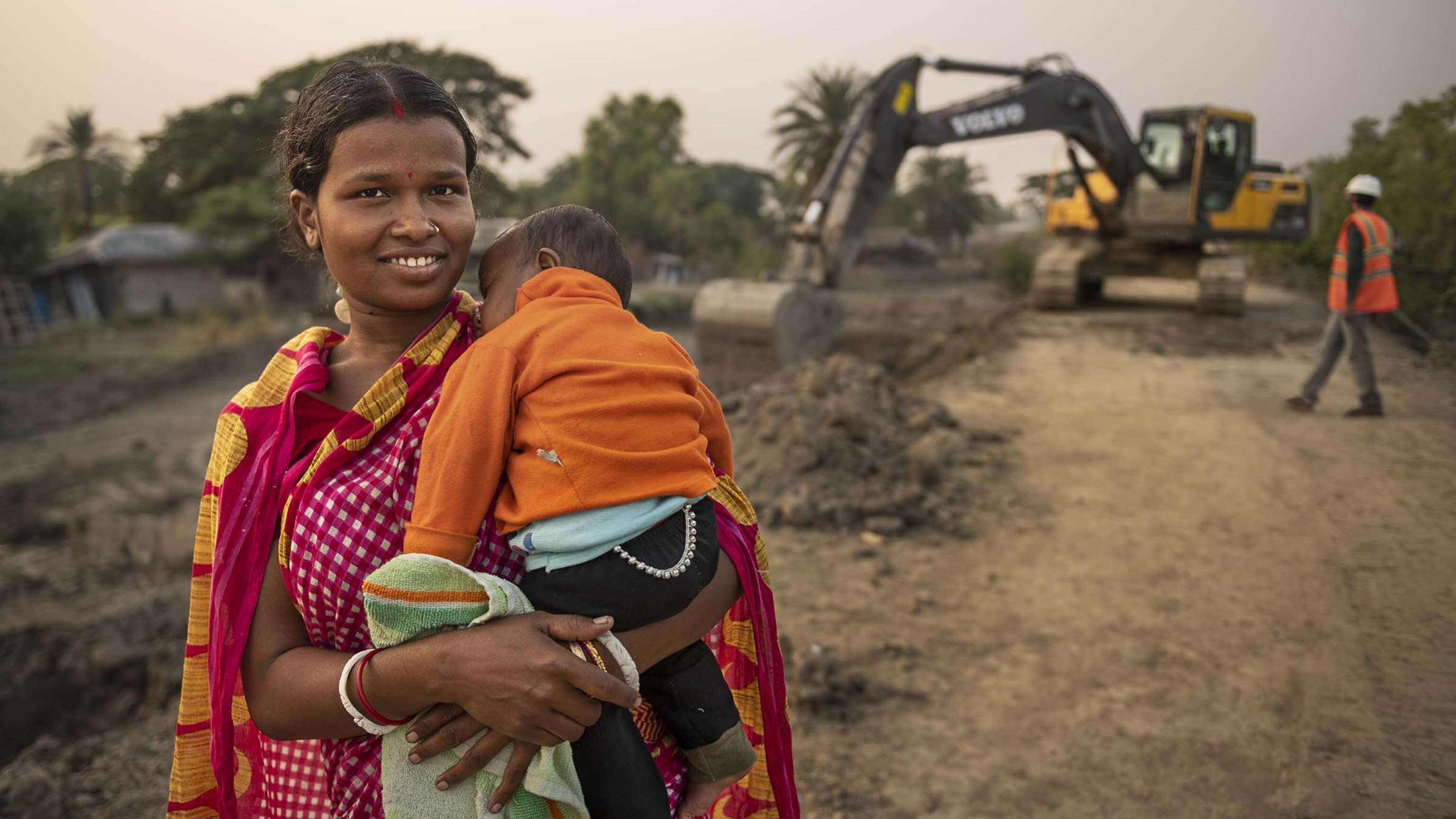
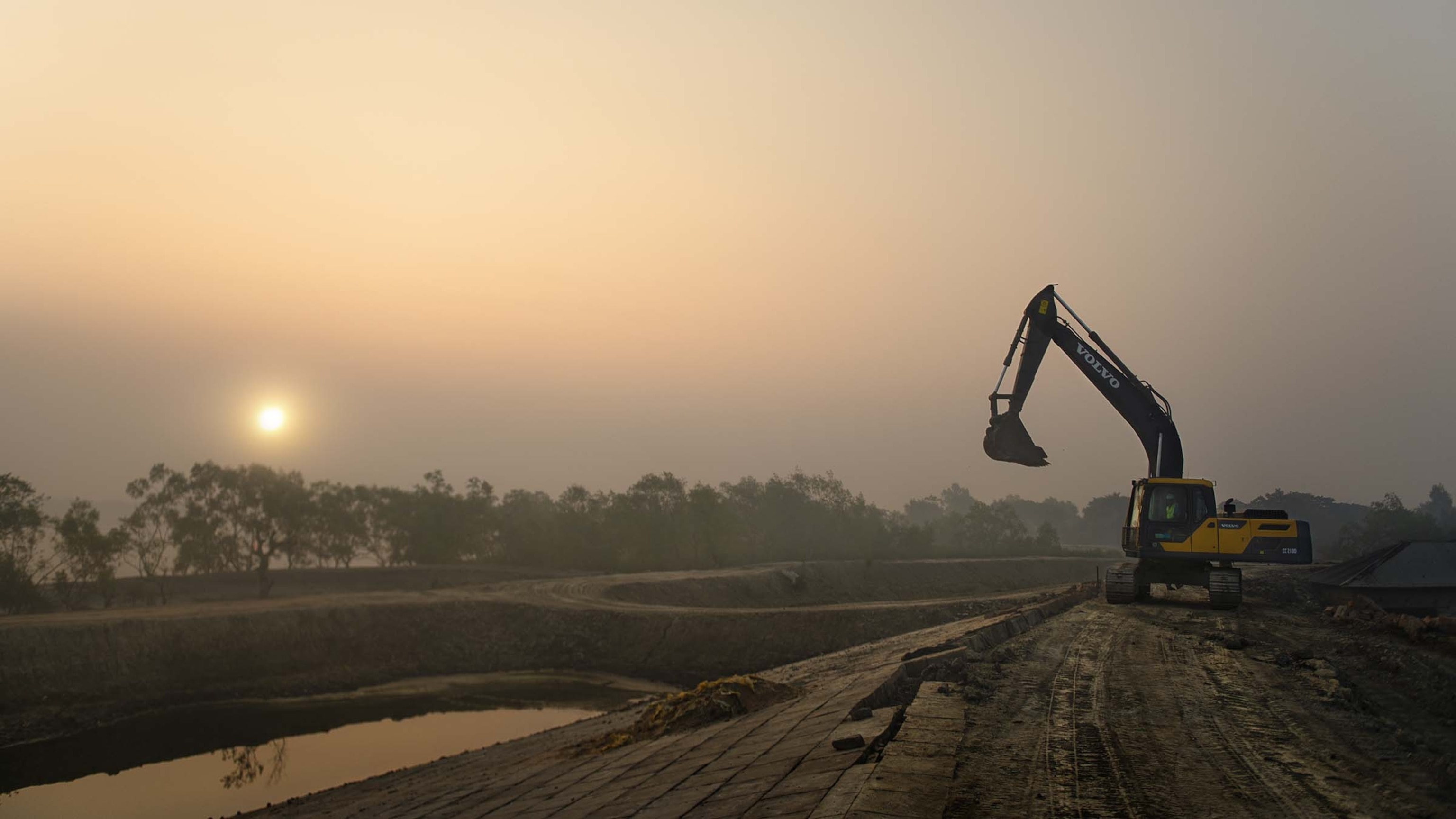
Since the reconstruction started, the project has utilised 20 Volvo excavators, 1,600km of concrete and the hard work of many skilled laborours to build up much hardier embankments, ensuring land and livestock are protected once and for all. So far, 5,000 meters of new embankments have been constructed.
Modern technology aside though, the project is still not without challenges. Just getting people, equipment and supplies to the construction site is hard going. The nearest city, Kolkata, is 100 kilometers away, and the only way to travel to the delta area of the Sundarbans is by boat, meaning both humans and machines must be transported via the water ways to islands in the delta.
Luckily, with the use of heavy construction equipment, the embankments are now fortified with broad concrete blocks to create a more resistant protection of the islands and their inhabitants. Not only do these concrete embankments protect the people, animals and fertile lands behind them – they also provide lengths of road along their tops, granting easier access to the area. A development that has made selling grain grown in Sundarbans a more viable venture, and may even allow the area to become one of the major grain siloes in the world.

More and more areas are being affected by rising sea levels and extreme weather conditions, likely as a result of climate change. But by fortifying protective structures with modern engineering, the Sundarbans will be better suited for whatever challenges tomorrow brings.
Discover more about the Sundarbans Embankment Reconstruction Project here.
